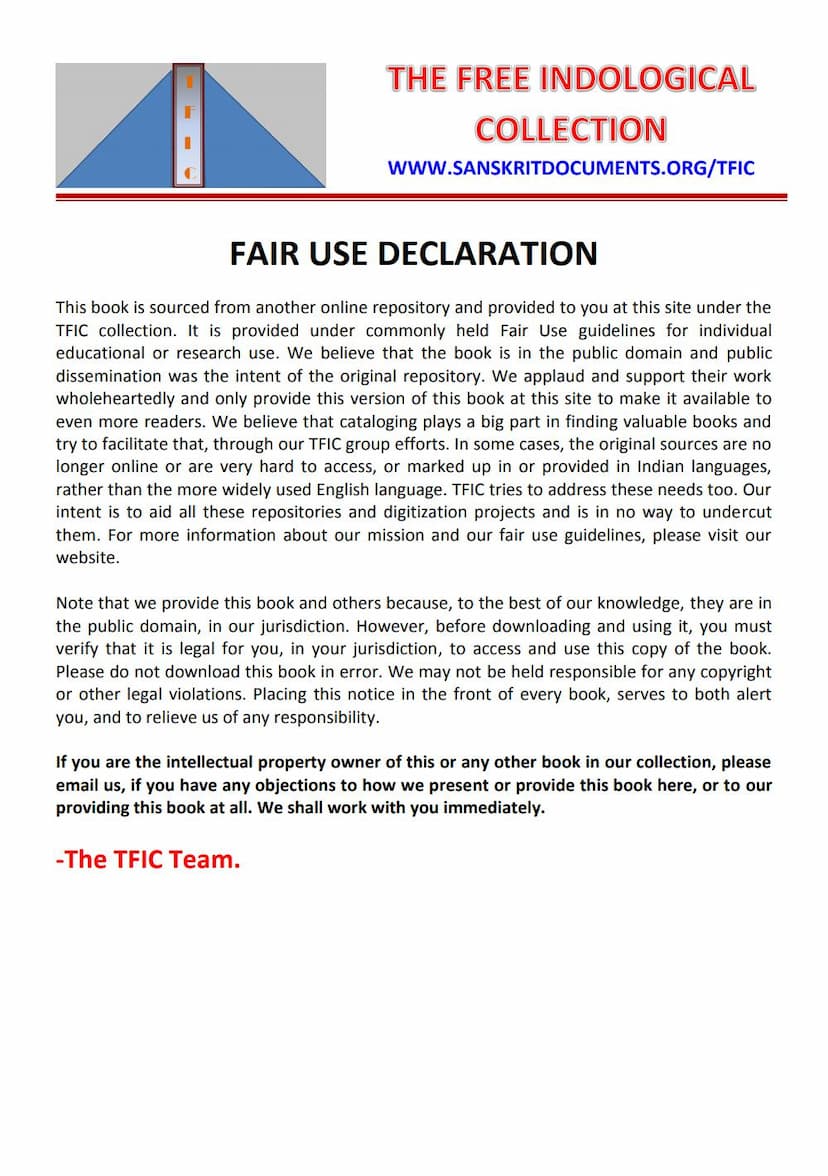Satyartha Chandrodaya Jain Arthat Mithyatva Timir Nashak
Added to library: September 2, 2025

Summary
Here's a comprehensive summary of the Jain text "Satyartha Chandrodaya Jain arthat Mithyatva Timir Nashak" by Parvati Sati, based on the provided pages:
Book Title: Satyartha Chandrodaya Jain arthat Mithyatva Timir Nashak (The True Sunrise of Jainism, or the Destroyer of the Darkness of False Belief)
Author: Mahasati Shri Parvati Ji, a young Brahmacharini and Jain religious teacher.
Publisher: Lala Meharchandra Lakshmandas Shravak, Lahore.
Publication Year: 1962 Vikram Samvat (approximately 1905 CE).
Core Theme: The book is a strong polemic against murtipuja (idol worship) within Jainism. It argues that idol worship is contrary to the authentic teachings of Jain scriptures and the path to liberation. The author aims to dispel the "darkness of false belief" (mithyatva timir) and illuminate the "true sunrise" of Jainism.
Key Arguments and Content:
-
Critique of Idol Worship: The central thesis is that Jainism, as taught by the Tirthankaras, does not advocate for idol worship. The author aims to refute the belief that worshipping idols is a necessary or even permissible practice for Jains.
-
Scriptural Basis: The book extensively uses quotations and interpretations of Jain sutras to support its arguments against idol worship. It critically examines terms like "cheitya" and their intended meanings within the scriptures, arguing that they do not refer to idols in the way contemporary idol worshippers interpret them.
-
Rejection of External Rituals for Liberation: The book emphasizes that true liberation (moksha) is attained through internal purity, right faith (samyaktva), right knowledge (samyakjnana), and right conduct (samyakcharitra). External rituals, especially idol worship, are seen as distractions and obstacles to this internal spiritual development.
-
Explanation of Jain Principles: The book likely delves into fundamental Jain principles, such as the nature of the soul, karma, liberation, and the role of the Tirthankaras, to establish a framework for understanding why idol worship is considered erroneous.
-
Philosophical Debate (Questions and Answers): A significant portion of the text is presented in a question-and-answer format, addressing common arguments and justifications for idol worship. The author systematically refutes these points with scriptural evidence and logical reasoning. Examples of questions include:
- If not idols, how can one know the form of God?
- Is an idol of the worshipped object also worthy of worship?
- Why do you take God's name if you don't believe in idols?
- Do idols provide knowledge?
- What about temples and idols mentioned in scriptures?
- What is the meaning of "cheitya"?
- Are murtipuja and related practices mentioned in scriptures like Uvasi Sutra, Gyata Sutra, Bhagavati Sutra, Rayaprashni Sutra?
-
Refutation of Specific Interpretations: The author tackles specific interpretations of scriptures by groups or individuals who support idol worship, such as the arguments made in works like "Samyaktva Shalyoddhar" by Atmaram. She meticulously breaks down their interpretations and demonstrates their flaws.
-
Emphasis on Internal Devotion: The book champions internal devotion, meditation on the true nature of the soul, and adherence to the ethical principles of Jainism as the true means of spiritual progress.
-
Historical Context: The text reflects a period of significant theological debate within Jainism, particularly between those who adhered to a more ritualistic and idol-centric approach and those advocating for a scripturally pure, internalized path. The author's stance aligns with the latter.
-
Praise and Endorsements: The presence of testimonials from scholars and religious figures like Pandit Durga Dutt Shastri, P. Tulsi Ram, B.A., and Pandit Radha Prasad Sharma Shastri indicates that the book was well-received and considered a significant contribution to Jain religious discourse. These endorsements highlight the author's erudition, clarity of argument, and adherence to Jain scriptures.
-
Structure and Presentation: The book is structured to systematically address the issue of idol worship, using scriptural evidence, logical arguments, and a question-and-answer format. The "Shuddhi Patra" (Correction Sheet) and detailed table of contents suggest a thorough and careful preparation.
Overall Significance:
"Satyartha Chandrodaya Jain" is a foundational text for understanding the anti-idol worship stance within certain traditions of Jainism. It serves as a scholarly and persuasive argument against the practice, rooted in a deep understanding of Jain scriptures. The book empowers followers to critically examine religious practices and adhere to the core spiritual principles of Jainism, emphasizing internal transformation over external ritualism.